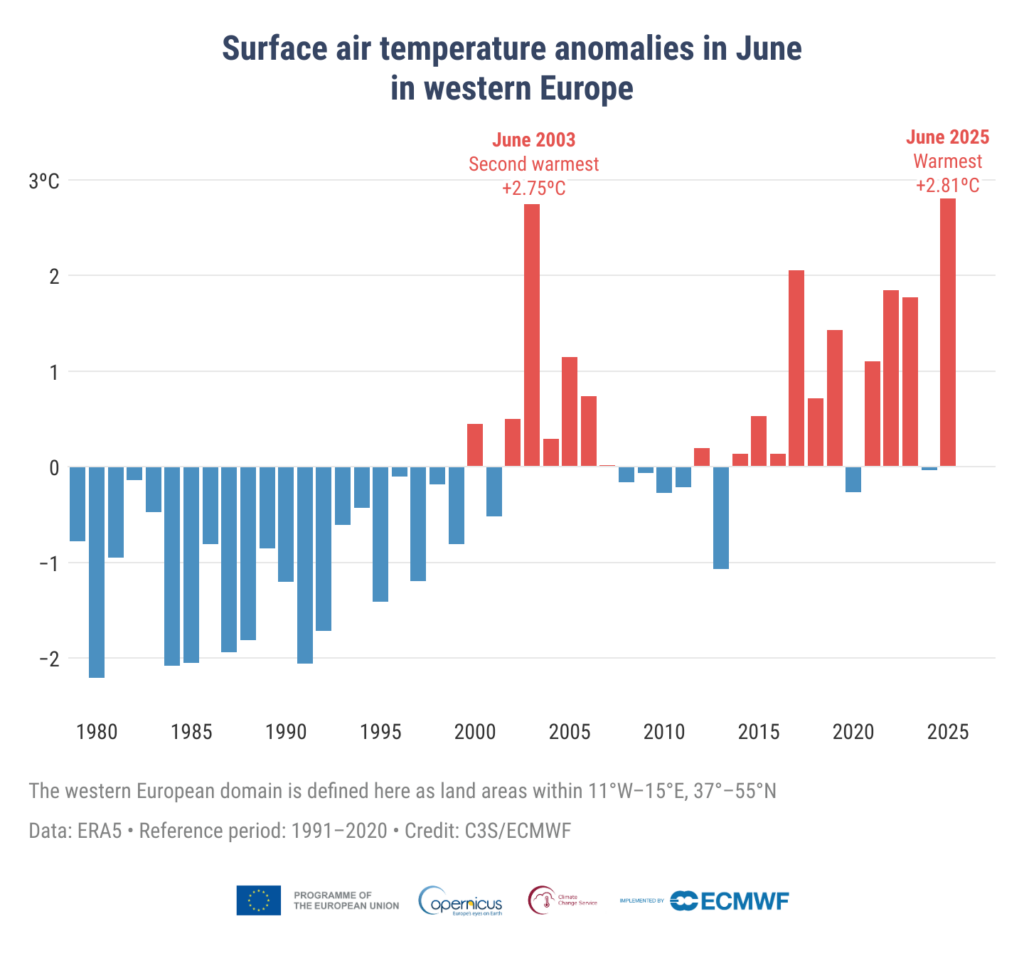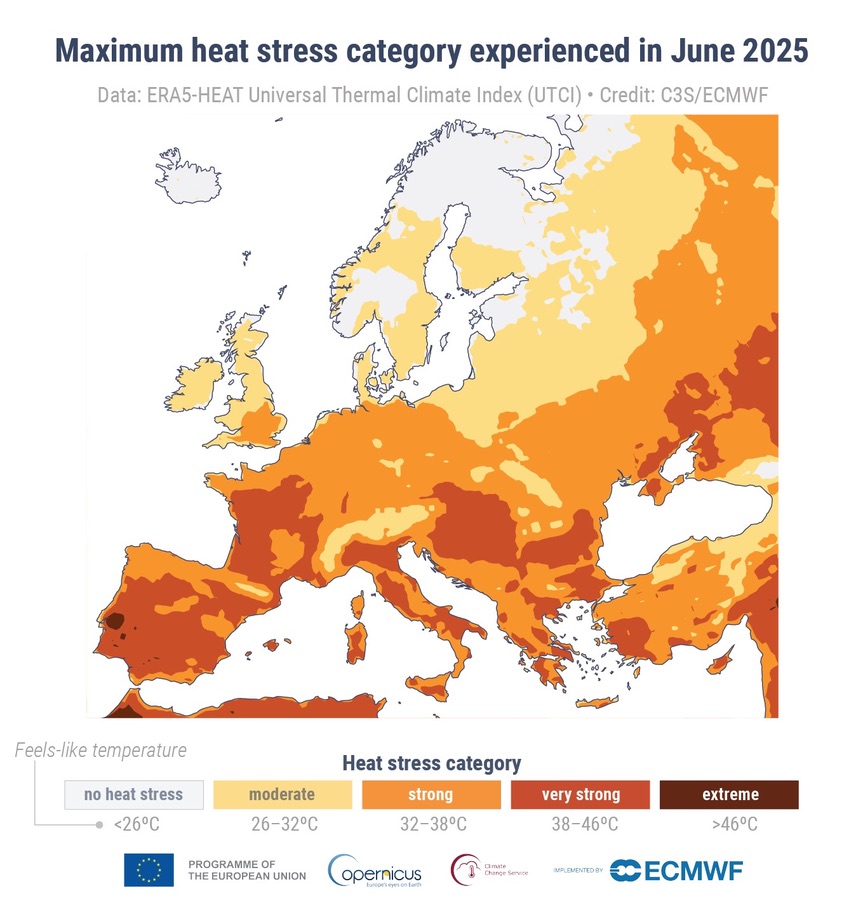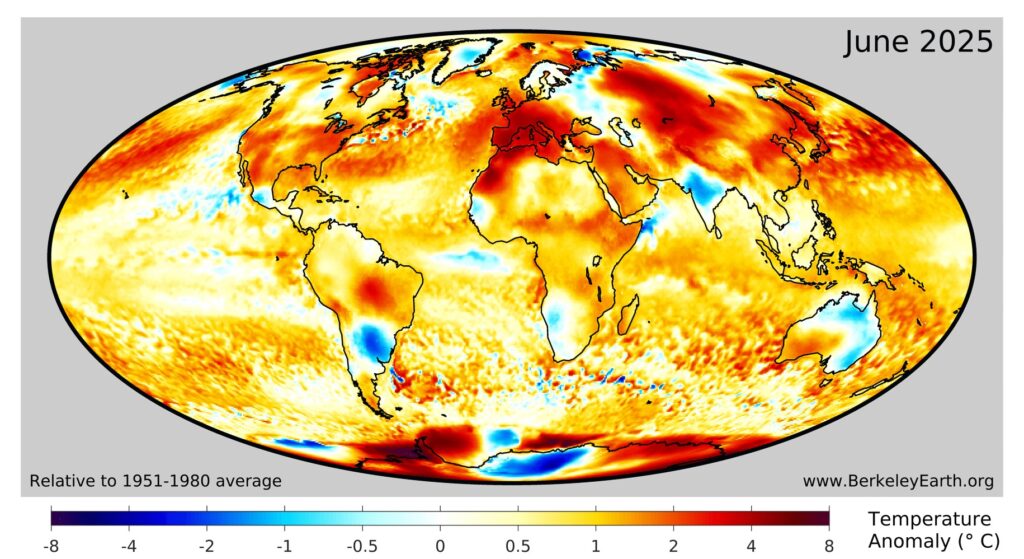The Copernicus Climate Change Service latest climate bulletin highlights that June 2025 was the warmest June on record for western Europe, with a monthly average temperature of 20.49°C and 2.81°C above the 1991–2020 average. The previous June record set in 2003 was surpassed by just 0.06°C. Notably, both June 2003 and June 2025 stand out as exceptional, as the next warmest June, in 2017, was 0.7 to 0.8°C cooler.

The two significant heat waves in mid-June and late June-early July 2025 will have made a significant contribution. The first event peaked between 17 and 22 June, affecting large parts of western and southern Europe. The second heatwave occurred at the turn of the month, with even more extreme temperatures between 30 June and 2 July across the same region.
On 30 June, the daily temperature averaged over the western European region reached 24.9°C, setting a new June record. The same temperature was recorded on 1 July. This is one of the highest daily temperatures ever observed in the region during summer, exceeded only at the height of the season—between mid-July and mid-August—during the heatwaves of 2003, 2018, 2019, 2022, and 2023. For much of western Europe, including most of Spain, Portugal, France and the United Kingdom, the average temperature recorded between the start of the first heatwave and the end of the second heatwave (17 June to 2 July) was the hottest for the time of year since at least 1979.
Europe faced not only elevated air temperatures but also higher-than-average ‘feels-like’ temperatures and an increased number of days with heat stress. Very strong heat stress was experienced across southern and western Europe, including Portugal, Spain, France, Italy, and the Balkans with ‘feels like’ temperatures an advance of 38°C.
Southern Europe also saw a significant rise in tropical nights, defined as nights with temperatures above 20°C. Spain experienced up to 24 tropical nights, 18 more than the June average, while Mediterranean coastal regions recorded 10–15, compared to typically none in June. These tropical nights hinder the body’s ability to recover from daytime heat, heightening the risk of heat-related health issues.

As can be seen from the post earlier in the article, June 2025 was the third-warmest June on record globally, with an average surface air temperature of approximately 16.19°C, 0.47°C above the 1991–2020 average and 1.55°C above the pre-industrial baseline. It ranked behind June 2023 and June 2003.
Global Sea Surface Temperatures for June 2025 averaged 20.87°C, the third-highest for June, following 2023 and 2024.
Berkeley Earth analysis indicates that 3.3% of Earth’s surface experienced a record high June monthly average (1.8% and 4.0% of land and ocean surfaces respectively). With 2025 now having a 64% chance to be the third warmest year on record and an 18% chance to have an annual average above 1.5 °C.

In addition Berkeley Earth estimate that the following nine countries set national average monthly records in June: Ethiopia, Federated States of Micronesia, Japan, Morocco, Nigeria, North Korea, Slovenia, Spain, and Western Sahara. Portugal can also be added to the list.